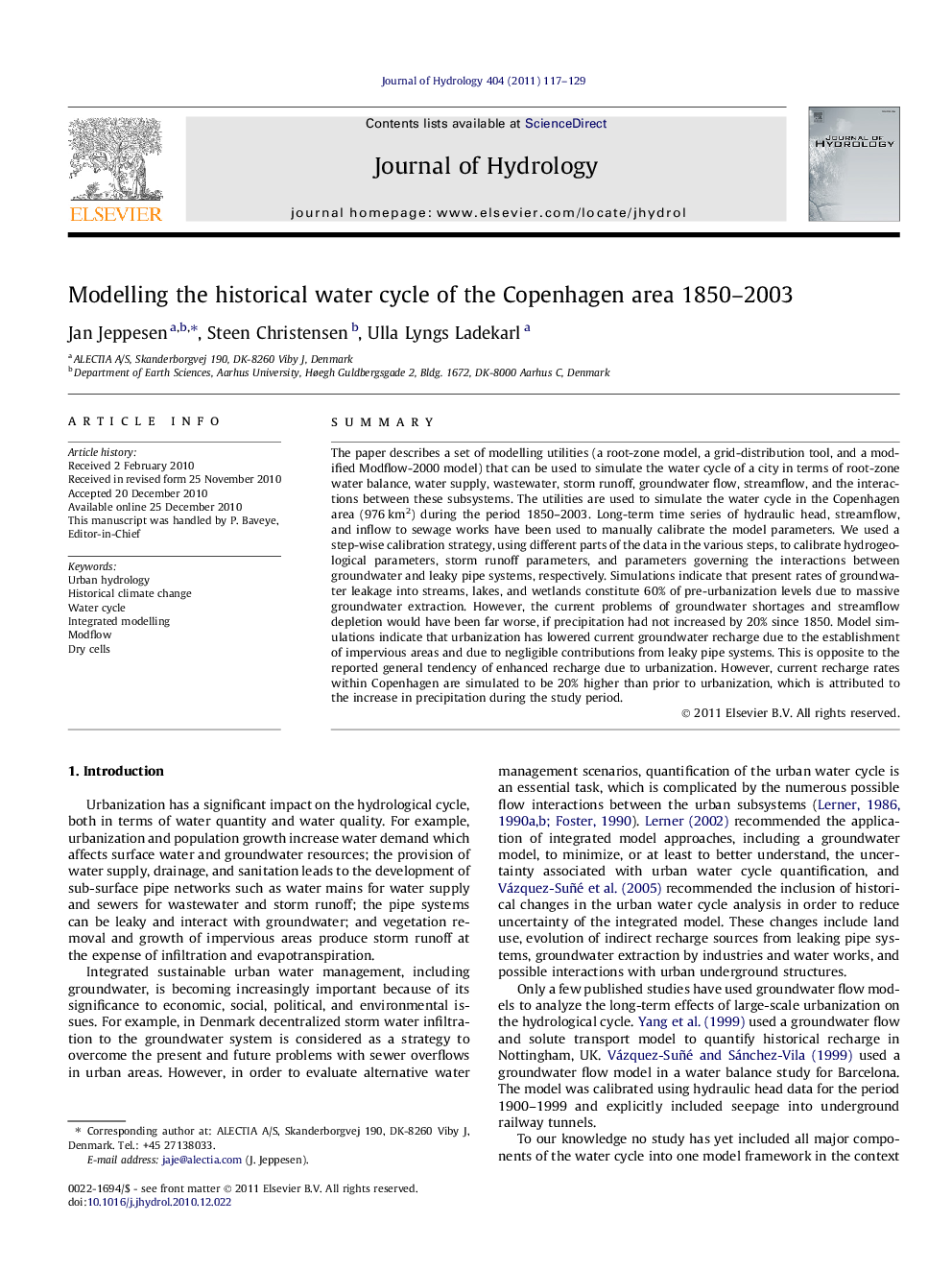| Article ID | Journal | Published Year | Pages | File Type |
|---|---|---|---|---|
| 4577545 | Journal of Hydrology | 2011 | 13 Pages |
SummaryThe paper describes a set of modelling utilities (a root-zone model, a grid-distribution tool, and a modified Modflow-2000 model) that can be used to simulate the water cycle of a city in terms of root-zone water balance, water supply, wastewater, storm runoff, groundwater flow, streamflow, and the interactions between these subsystems. The utilities are used to simulate the water cycle in the Copenhagen area (976 km2) during the period 1850–2003. Long-term time series of hydraulic head, streamflow, and inflow to sewage works have been used to manually calibrate the model parameters. We used a step-wise calibration strategy, using different parts of the data in the various steps, to calibrate hydrogeological parameters, storm runoff parameters, and parameters governing the interactions between groundwater and leaky pipe systems, respectively. Simulations indicate that present rates of groundwater leakage into streams, lakes, and wetlands constitute 60% of pre-urbanization levels due to massive groundwater extraction. However, the current problems of groundwater shortages and streamflow depletion would have been far worse, if precipitation had not increased by 20% since 1850. Model simulations indicate that urbanization has lowered current groundwater recharge due to the establishment of impervious areas and due to negligible contributions from leaky pipe systems. This is opposite to the reported general tendency of enhanced recharge due to urbanization. However, current recharge rates within Copenhagen are simulated to be 20% higher than prior to urbanization, which is attributed to the increase in precipitation during the study period.
► We model the water cycle in the Copenhagen area during the period 1850–2003. ► Observations of hydraulic head, streamflow, and sewage flow was used in model calibration. ► We examine impacts from urbanization and climate changes during the period. ► Urbanisation had a lowering effect on recharge rates. ► Recharge rates has increased due to an increase in precipitation.
